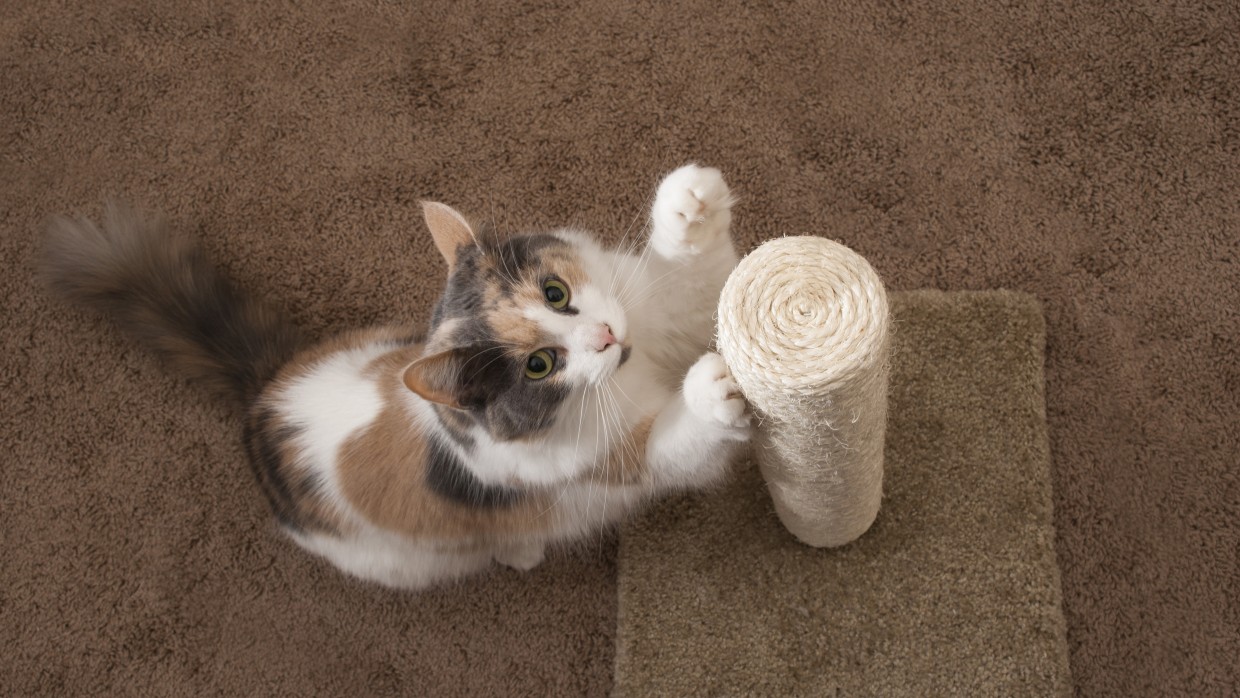- December 29, 2022
- No Comment
- 7 minutes read
Why you shouldn't declaw a cat – HSUS News

Declawing is the amputation of the last bone of each toe. It would be like cutting off your fingers at the last knuckle. The standard method of declawing is amputating with a scalpel or guillotine clipper. The wounds are closed with stitches or surgical glue, and the feet are bandaged. Another method is laser surgery, in which a small, intense beam of light cuts through tissue by heating and vaporizing it. Both can cause lasting physical problems for your cat.
Dozens of countries and the state of New York have banned declawing. The Humane Society of the United States opposes declawing and tendonectomies except for rare cases when it’s necessary for medical purposes, such as the removal of cancerous nail bed tumors.
Download Declawing Fact Sheet
During a tendonectomy, the tendon that controls the claw in each toe is severed. The cat keeps their claws but can’t control them or extend them to scratch. This procedure is associated with a high incidence of abnormally thick claw growth. Therefore, more frequent and challenging nail trims are required to prevent the cat’s claws from snagging on people, carpet, furniture and drapes, or from growing into the cat’s paw pads.
Because of complications, a cat who has been given a tendonectomy may require declawing later. Although a tendonectomy is not actually amputation, a 1998 study published in the “Journal of the American Veterinary Medical Association” found the incidence of bleeding, lameness and infection was similar between tendonectomy and declawing.
Declawing can cause paw pain, back pain, infection, tissue necrosis (tissue death) and lameness. Removing claws changes the way a cat’s foot meets the ground and can cause pain like wearing an uncomfortable pair of shoes. Improperly removed claws can regrow, causing nerve damage and bone spurs.
For several days after surgery, shredded newspaper is typically used in the litter box to prevent litter from irritating declawed feet. This unfamiliar litter substitute, accompanied by pain when scratching in the box, may lead cats to stop using the litter box. Some cats may become biters because they no longer have their claws for defense.
As a vet student, Christine Schelling once saw a cat hurling himself against the sides of his cage because of the pain after his declawing. “I swore I would never do a declaw surgery,” Schelling remembers. A few years later, she launched declawing.com, a website that educates cat owners about this often-misunderstood surgical procedure.
Sign up to receive our exclusive e-book full of important information about caring for your pet, including training techniques and answers to frequently asked questions.
Scratching is normal cat behavior; it helps your cat stretch their muscles, shed the outer nail sheath from their claws and mark territory.
In the wild, cats use their claws to catch prey, defend themselves and escape from predators. At home, that translates to attacking toys and climbing to favorite perches. Because they have scent glands on their paws, scratching is also a way of putting their scent in their territory, which helps them feel at home and secure.
“Scratching is a vital part of cat behavior,” says veterinarian Susan Krebsbach with the Humane Society Veterinary Medical Association. “It’s a sign of a happy cat.”
Cats do not think in terms of right or wrong, says cat behaviorist Matt Wildman. In fact, they don’t have any concept of doing the right or wrong thing. Cats only think in terms of meeting their needs. When a cat has a need to scratch, the answer to the question, “Where should I scratch?” is not “What do the humans prefer?” but “Where do I prefer to scratch?”
People with immunodeficiencies or bleeding disorders may be particularly concerned about cat scratches, but disease specialists don’t recommend declawing. The risk from scratches for these people is less than those from bites, cat litter or fleas carried by cats. You can prevent cat scratches by monitoring children around cats, reducing stressors in your cat’s environment and learning to recognize when your cat is overstimulated by petting, also known as petting-induced aggression.
If your cat intentionally scratches people out of fear or aggression, consult a trainer or behaviorist for guidance on behavior modification using positive reinforcement. To prevent accidental scratches, keep your cat’s claws trimmed and ask your veterinarian about soft plastic nail caps.
Cats prefer to scratch tall, sturdy objects that allow them to dig their nails in and get a good grip. That’s why cats tend to scratch furniture. Most cats prefer (even more than furniture!) a scratching post that’s at least 32” tall, will not wobble when scratched and made of a type of rope called sisal. Some cats prefer to scratch horizontally, in which case you can either place the vertical scratching post on its side or find a sturdy sisal-covered horizontal scratcher. Some cats like scratching corrugated cardboard as well. Another ideal scratching surface is wood, so if you’re handy you can create your own scratching post or pad. Just make sure it’s tall or long enough and sturdy.
It’s very important that you do not carry your cat to the scratching surface and rub their paws on the surface. This may seem harmless, but this can create a stress response in some cats and lead them to avoid the scratching post or pad.
By providing your mobile number, you agree to receive autodialed, recurring text messages from the HSUS with updates and ways you can help animals. Message and data rates may apply. Text STOP to 77879 to opt out, HELP for info. Privacy policy. Terms and conditions.
© 2022 The Humane Society of the United States Privacy policy and terms.
The Humane Society of the United States is registered as a 501(c)(3) nonprofit organization. Contributions to the HSUS are tax-deductible to the extent permitted by law. The HSUS’s tax identification number is 53-0225390.
Transparency in coverage.

